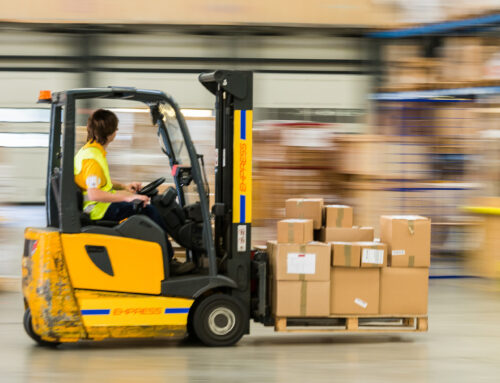Wooden skids are extremely durable, versatile, and have been around for quite some time. When it comes to transportation packaging, manufacturers have what feels like a million options to choose from. In many cases, wooden skids might be the perfect fit. Having a full understanding of wooden skids can help manufacturers narrow their options for wood packaging, learn about industry history, and, most importantly, understand the circumstances in which wooden skids are the best option.
To know when exactly manufacturers should use wooden skids, we’ll be taking a look at the history of wooden skids, evaluating the product’s design, and observing how different manufacturers use them. By the end of this article, you should feel more equipped than ever to make the call on whether or not you should use wooden skids.
A Storied History
In today’s highly technical and regulated manufacturing industry, it’s no surprise to industry professionals that a lot of machines, vehicles, and even assembly workers’ actions are defined to a tee. When it comes to wood packaging in a broader sense, however, definitions fall on the more lenient side of the aisle.
As we’ve covered before, in essence, wooden skids are simply defined as deck boards on top of two stringers. Wooden skids are so simple in fact, that they’ve literally been around since the pyramids.
In ancient Egypt, during the construction of the pyramids, it’s hypothesized that the ancient Egyptians were using primitive forms of the skids we use today! According to historians, the Egyptians would load multi-ton stone blocks on the skids, load the skids onto lubricated tracks, and push/pull the skid up to the construction sites from the quarry. Utilizing these “proto-skids,” the Egyptians were able to create one of the seven wonders of the world!
From ancient Egypt onward, many civilizations have utilized the simplicity of wooden skids to move large objects. Until the late 18th and early 19th centuries, people from all over the world were creating skids on their own for different projects. It wasn’t until the industrial revolution that the construction of skids saw more uniform manufacturing. Shortly after the first pallet was invented – sparking the skid vs. pallet debate that carries on today.
Despite having a new “competitor,” wooden skids still had plenty of roles to play in industries across the globe. For instance, throughout the 19th and early 20th centuries, skid rows were popular in the United States logging industry. No, not the skid rows you may be thinking of, but the system of transporting felled trees on skids through the forest. This was achieved by having oxen tug skids through the same “skid rows” back to the logging site. Although that particular job may be gone, skids still have plenty of work to do today because of their timeless design.
The Design and Use of Wooden Skids
Although wooden skids aren’t anywhere close to a technological marvel by today’s standards, the practical design of wooden skids still proves to be extremely useful for many different industrial applications. When built with the right materials, such as industrial softwoods or hardwoods, wooden skids can hold thousands, if not tens of thousands of pounds, depending on the skid’s construction.
Modern-day skids aren’t too far off from their ancient counterparts. Consisting of multiple reinforced deck boards on top of engineered stringers, wooden skids give manufacturers a strong tool for short-term or long-term storage of heavy industrial products. Built with modern, treated lumber, the skids of today can not only hold enormous amounts of weight but are durable for several years before needing to be repaired or recycled.
Manufacturers today still use skids for transportation and storage in many different industries. For instance, in the HVAC and Appliance industries, skids are commonly used for the transportation of heavy machinery. Being large and expensive, wooden skids are deemed necessary by these manufacturers to ensure that their packaging won’t buckle underneath the product’s weight in transit or in storage. A different common practice, found in the image of this article, is transporting steel or copper coils on wooden skids. This keeps their heavy products off the ground and undamaged.
A final example of wooden skids being used in today’s world can be found in agriculture. Whereas pallets are great for moving around a flat warehouse floor, they fall short in their ability to move in a more natural environment. Wooden skids are commonly used in the agricultural industry because of their ease of use outdoors. Although you still have to solve the problem of vertical movement, movement along grass or gravel isn’t nearly as hard to achieve with wooden skids.
We Hope You Know When and Where to Use a Skid!
Being used throughout much of human history, skids have been a handy tool for thousands of years. Whether you’re moving industrial-sized appliances, bails of hay, or even two-ton rocks, skids can prove themselves useful in many different situations and industries! So, the next time you’re wondering if you should use a skid or not – remember the product’s history, design, and effective application.



![[PRESS RELEASE] Conner Industries Announces Website Dedicated to Integrated Packaging Division](https://conner.b-cdn.net/wp-content/uploads/2024/05/Conner-Packaging-Blog-500x383.jpg)



